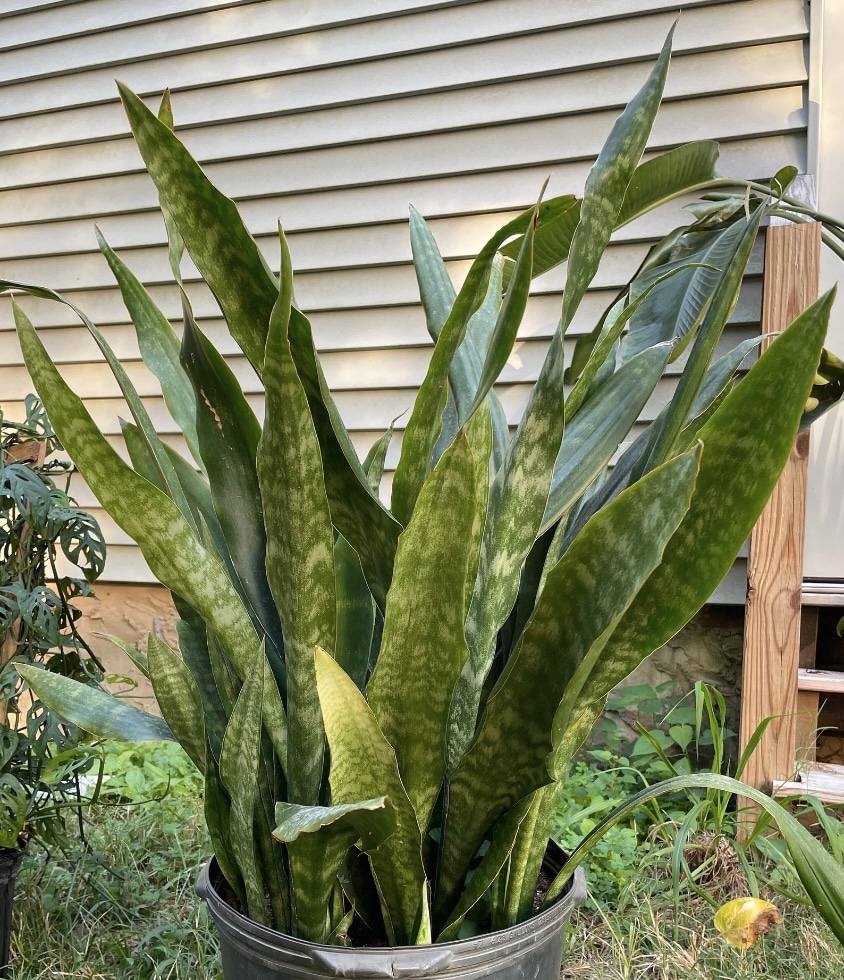The Jaboa snake plant is one of the easier plants to grow indoors. As these plants are succulents, they don’t require a lot of water or care and are great for beginners. They also look great and make an interesting focal point in a room.
This guide will discuss the growth and care requirements for the Jaboa snake plant. We will also provide tips on keeping your plant healthy and thriving. Let’s look at Jaboa snake plant growth and care, so you can add this plant to your indoor garden.
What is a Jaboa Snake Plant?

Jaboa is one of the many species of Sansevieria, which are commonly referred to as snake plants. They are native to Asia and are commonly found growing across China. These plants are part of the Asparagaceae botanical family.
Depending on conditions, this plant can reach tall heights if allowed to grow outdoors. However, when grown indoors or in a greenhouse, they remain relatively small. Snake plants are commonly referred to as mother in laws tongue, vipers bowstring and sword plants.
The leaves are long and straight, with a sharp point at the end. Depending on the amount of shade they receive, they can range from light to dark green in color and have a dabbled pattern. The flowers of this plant are small and inconspicuous, but if grown indoors, you may get a flower spike popping up every once in a while.
How to Care for a Jaboa Snake Plant?
You should know a few things when growing a Jaboa Snake plant. First, these plants can reach pretty impressive heights. If grown indoors, they will remain smaller and only reach one or two feet in height. Here are some tips to help you care for a Jaboa snake plant:
Sunlight requirements
When deciding where to place your plant, make sure the spot has at least six hours of direct sunlight every day. In some cases, this may mean placing these plants outside during the summer months. Ensure you bring your snake plant back inside in the fall before the first frost. You can grow a Jaboa Snake plant outdoors year-round if you live in USDA Zone 10 to 12.
Fertilization
Jaboa snake plants don’t need any extra fertilizer if grown in a good quality soil. They are considered an insect resistant plant due to their toxicity. If you wish to fertilize your plant, use a general-purpose fertilizer at one-third of the suggested rate. Do this once a month from April to September, or use a slow-release fertilizer annually.
Watering needs
Jaboa snake plants should be watered once every 7 to 10 days during the growing season, between April and October. In winter, they can go up to two weeks without water. Be sure that the pot drains well so your plant doesn’t get root rot. If their leaves or stems appear soft or wrinkled, it means they need to be watered. Regular watering will help your plant thrive, but as Jaboa snake plants are succulents, they should be left to dry out between waterings.
Soil and repotting
Jaboa snake plants grow well in a soil mixture of equal parts peat moss and perlite or coarse sand. Alternatively, use a pre-mixed soil that’s been specifically formulated for succulents and cacti. Repot once every two years with fresh potting soil, as the old soil may contain pests and diseases.
The Jaboa snake grows best in soil that’s slightly acidic and has a pH range of between 5.5 and 7.0. However, it’s pretty adaptable and can cope with neutral soils.
Temperature requirements
Jaboa snake plants can survive in temperatures ranging from 60 to 85 degrees Fahrenheit. They are considered one of the more cold-tolerant succulents. If grown outdoors, these plants need protection from direct sunlight. The leaves will show signs of sun damage if this is not done.
Conclusion
Jaboa snake plant flowers can grow up to three feet tall in a greenhouse or outdoors, however, if kept indoors, they rarely grow higher than one foot. These plants are large and eye catching with beautiful leaves. They make a great addition to any home, office, or business waiting room.